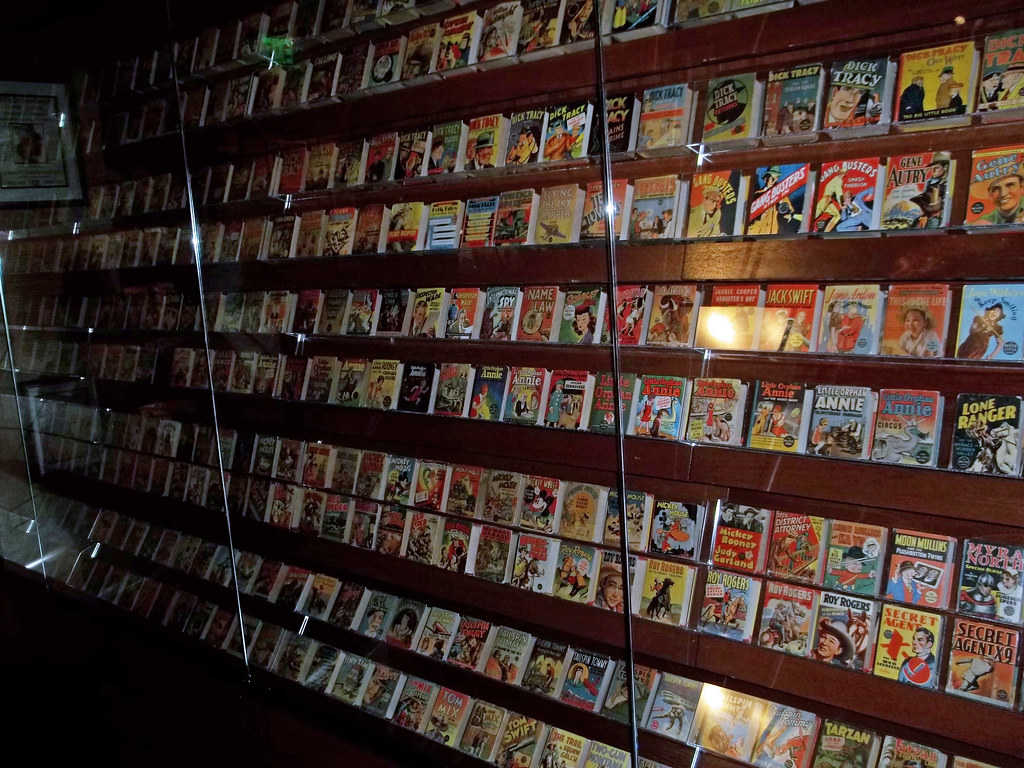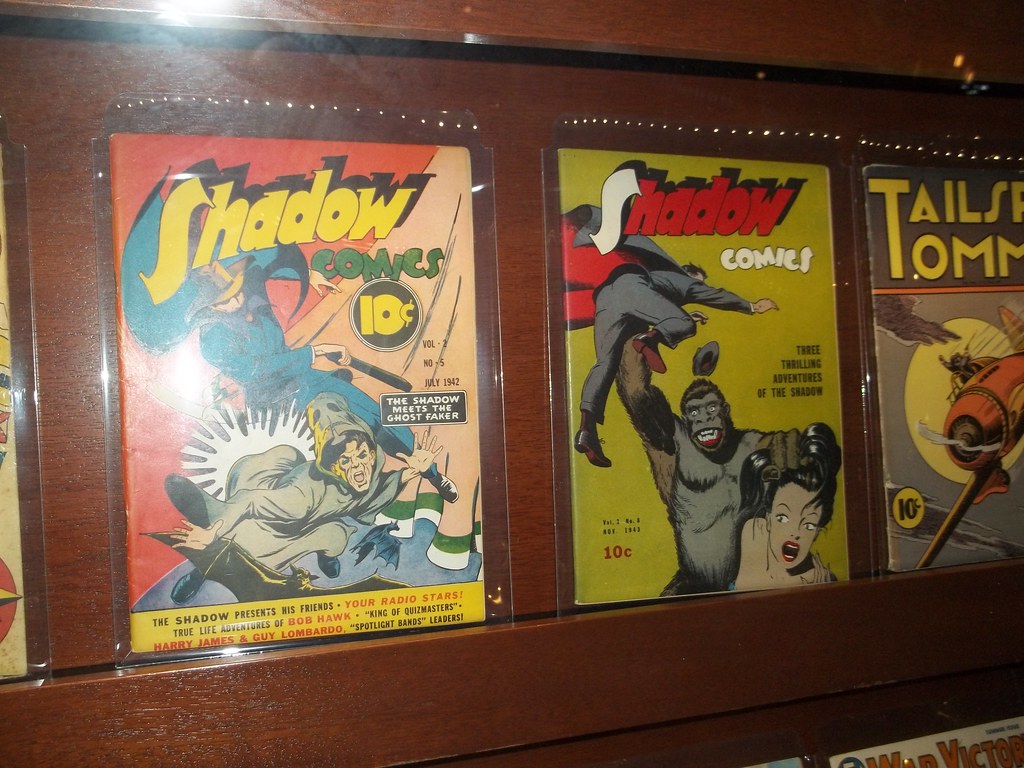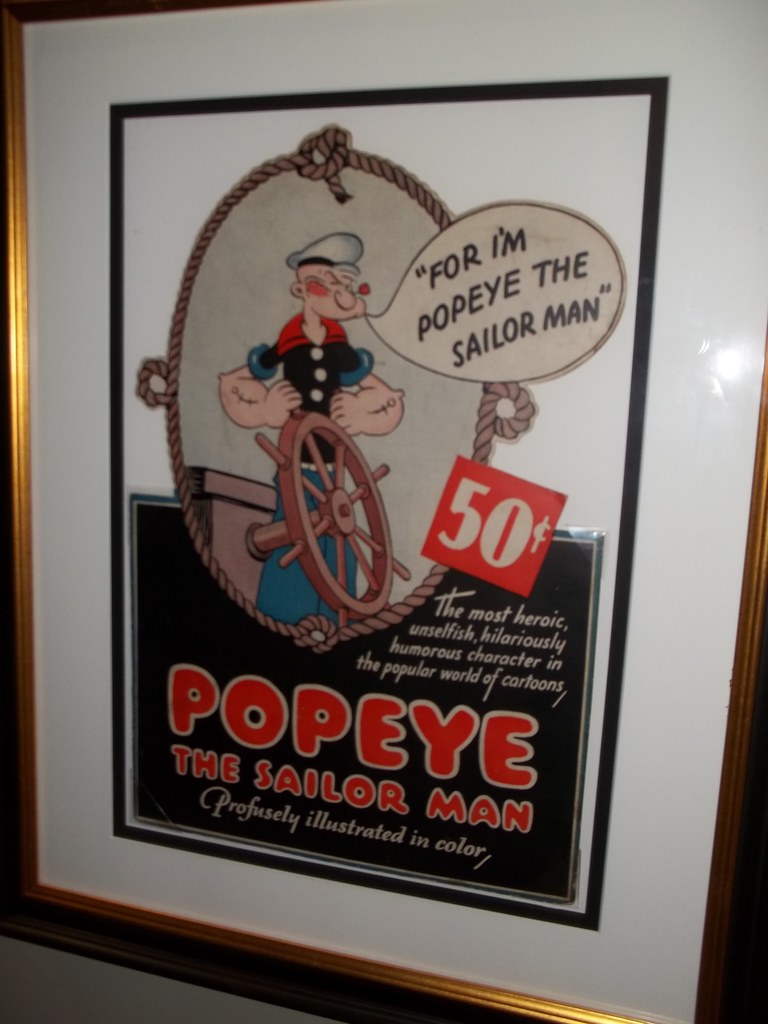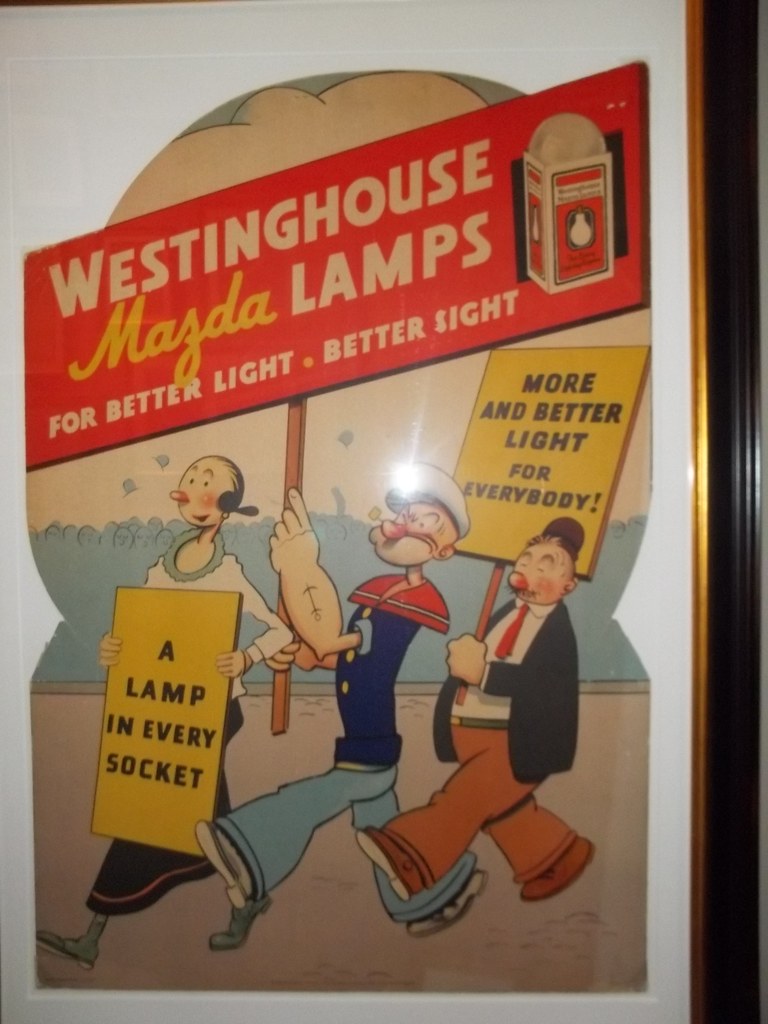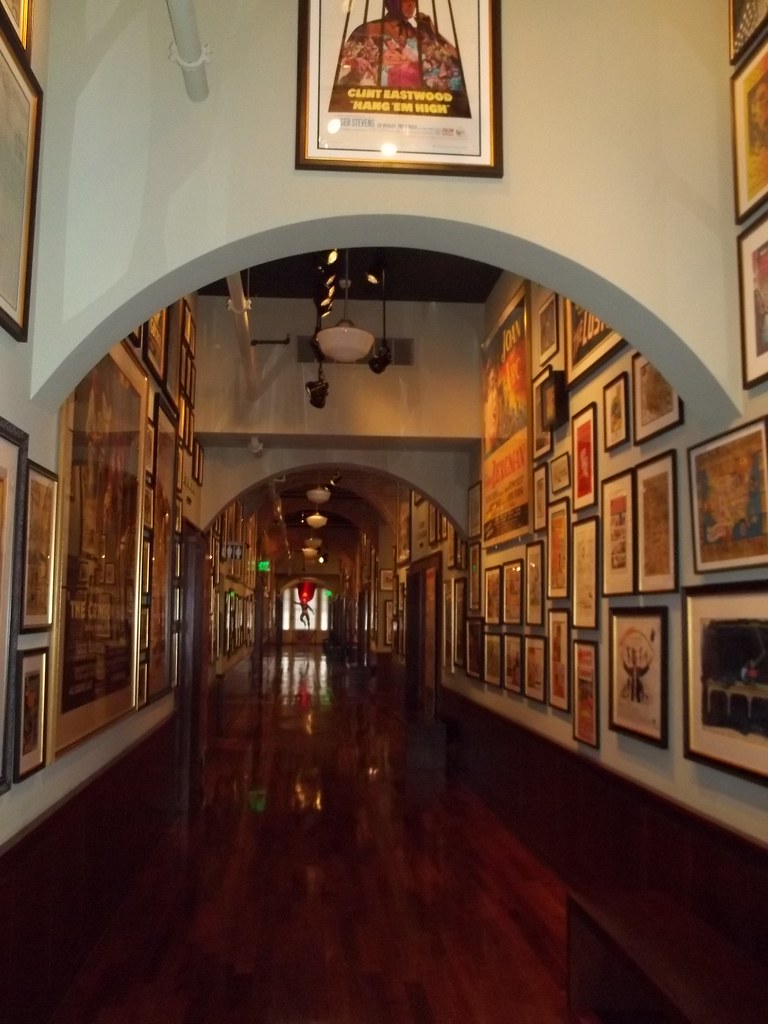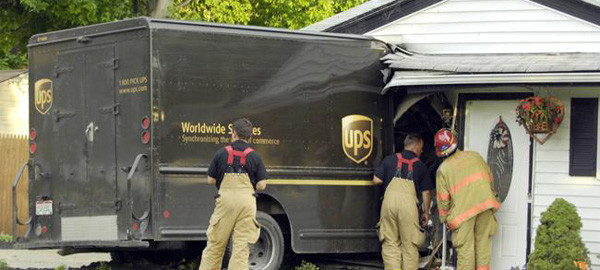| | ||||||||||||||||||||||||||||||||||||||||||||||||||||||||||||||
| ||||||||||||||||||||||||||||||||||||||||||||||||||||||||||||||
Thursday, June 21, 2018
PR: SPX 2018 Announces Special Guests
Paul Merklein's 'exit interview'
by Mike Rhode
Paul Merklein wrote in to say that the cartooning course he's been teaching for Arlington County needs a new teacher because he's leaving the area for Wisconsin. I last interviewed Paul in 2015 - http://comicsdc.blogspot.com/
MR: Why are you moving?
PM: My family and I moved to Silver Spring in 2009, and we're moving back to Wisconsin for a variety of reasons that involve being closer to our family there.
MR: Are you continuing the Dabney and Dad strip after you move? Is Facebook still your distribution method for it?
PM: I consider Facebook to be the most effective platform to deliver your cartoons to your audience. Newspapers and magazines are going the way of the dodo, and books might be right behind them. That said, my first "Dabney and Dad" book should be published before the end of the year. You can see my cartoons at https://www.facebook.com/dabneyanddad
MR: For the past few years, you taught cartooning in Arlington? What did that entail?
PM: I was hired to do two things I love to do - draw cartoons, and talk about cartooning. My students were teens and tweens - some just beginners, and some who were already skilled. I enjoyed the conversations and questions. Many of the students have never read a newspaper, and only know cartoons from book collections. "Calvin and Hobbes" is still incredibly popular.
MR: Is there anything in particular you'll miss about DC?
PM: I love the people in DC, our neighborhood in Silver Spring, crab shacks on the eastern shore, and more places than I can count. We already miss Obama in the White House.
MR: What's your favorite cartoon-related memory or event or place?
PM: I met a lot of famous cartoonists at Comic Cons - Stan Lee, Jeff Smith (Bone), Mike Mignola (Hellboy), Frank Cho, Jules Feiffer, and Liza Donnelly and Sam Gross from The New Yorker. I also met cartoon editors like Amy Lago, and Bob Mankoff and Emma Allen at The New Yorker. They all said they liked my cartoons and wanted to see more.
I still enjoy writing and drawing cartoons, and I believe the digital world is an ideal place for them. People's attention spans keep getting shorter, and cartoons are a perfect way to tell a very short story.
Wednesday, June 20, 2018
Arlington adult cartooning teaching job opening
Paul Merklien wrote in to point out that he's leaving the area and this job is becoming available. We'll have our first 'exit interview' with Paul soon.
TEACH CARTOONING THIS FALL
Attention all adult cartoonists in the DMV area!
Arlington Parks and Recreation is looking for a qualified and experienced cartoonist to teach Cartooning this fall.
Do you draw cartoons? Do you have experience teaching teen and tween students?
Hours and pay are flexible, and the job could not be better. You get to talk about cartoons, draw cartoons and teach cartooning. And get paid for it!
Contact Dawn Benedetto at 703-228-5922
email: dbenedetto@arlingtonva.us
Glen Weldon recommends Wallace the Brave
The Unusual Success Of The 'Wallace The Brave' Comic Strip
https://ondemand.npr.org/anon.npr-mp3/npr/atc/2018/06/20180619_atc_the_unusual_success_of_the_wallace_the_brave_comic_strip.mp3
Comics Journal profiles Fantom Comics
Fantom Comics
BY The Editors Timothy Hodler & Tucker StoneJun 20, 2018
http://www.tcj.com/fantom-comics/
Sara Duke discusses Steve Geppi's Museum donation to the Library of Congress
By Mike Rhode
Shortly after the announcement that Steve Geppi of Baltimore would be closing his Geppi’s Entertainment Museum in Baltimore and donating its holdings to the Library of Congress, I reached out to Library of Congress graphic arts curator Sara Duke (a personal friend of mine) for her thoughts on the donation.
MR: Whose idea was this donation? Did it come from the top down?
SD: My understanding is that Dr. Hayden and Steve Geppi have been long-term friends going back to her days at the Enoch Pratt library. The directive from inside the Library came from her, but the staff in the Prints and Photographs and Serials divisions were enthusiastic about the opportunity.
MR: Do you know what the offer consisted of originally? Was it the entire contents of the Geppi’s Entertainment Museum (GEM)?
SD: Yes, we were told that we could have whatever we wanted from the museum. We don’t collect many three-dimensional objects, even though we’re in the process of building three more storage modules at Fort Meade to store our book collection, but even with that we don’t have sufficient space to store objects properly. So the decision was made to be very selective about 3-D works of art, but to be inclusive of works of arts on paper, photographs, newsprint, comic books, Big Little Books, sheet music and even some recorded sound.
SD: Teams of people from the Prints & Photograph and Serials divisions went to Baltimore. We were provided with a spreadsheet from the Museum, probably created by an appraiser, and from the inventory list, we worked room by room deciding what was wanted, what was actually on the walls or in the cases but not on the inventory list, and trying to ascertain what would come to the Library. It took several trips to do that as you would imagine. We sat down as a team and we reached out to colleagues in other divisions about what they would and would not take. We created a list of desiderata to give to Mr. Geppi’s representatives.
MR: Was material that was not on display included as well?
SD: No.
MR: Where is some of the non-art or serial material such as the Big Little Books going?
SD: They’ll go to Rare Books. They already have a collection.
MR: Are they taking all of them or cherry picking?
SD: I believe they’re cherry picking so they don’t create a duplicate set. But the Serials division decided they would be inclusive and make the Geppi comic book set the exhibit-only set, while the existing comics in the Library would be the reference collection that researchers could handle. It’s been a research collection, and people have been looking at them… it’s a double-edged sword. If we never let anybody look at them, they’d be pristine, but we’re a research institution and people are supposed to look at and handle things.
MR: I’ve seen some lists of the donation in various press releases. What are the highlights for you or your department?
SD: There are memorable pieces like the nine-sheet Bambi poster. We have a few nine-sheet posters in our collection, some attached and some detached, but that’s in spectacular condition. I know we have the display space for it at the Library of Congress, but it’s never going to look like it did in Geppi’s Entertainment Museum. That makes me sad. It was an over-the-top lovely gem (pun intended) of a museum. What stood out to me beside that? There’s some great comic strip drawings, an overwhelming number of posters -- some of which may be duplicates of what we have, but without taking a photograph of every one on the wall and comparing them against our collection, we just don’t know, and we didn’t have time to do that. So we’re taking every single poster that was on the wall.
And just because something wasn’t on the walls doesn’t mean it’s gone from the collection. Michael, the curator there, said he was forever moving art in and out. Between the times we went out during a snowstorm in March and then again in April, he had rotated things from the warehouse and the Museum.
MR: What does that mean for you guys? If you get to pick from the Museum, does that include the warehouse too?
SD: That has not yet been offered to us.
MR: When did this start? Obviously it would be a complex negotiation.
SD: Late last year, or very early this year. Mr. Geppi came to visit the Library two or three times last year. One time he saw the original art for Amazing Fantasy #15 (aka the first appearance of Spider-Man – MR). He came back down for a private conversation with Dr. Hayden and then we started talking about going up to Baltimore to figure out what it would mean as an institution to absorb his collection. For a lot of institutions, absorbing 3,300 items would be overwhelming but for us it’s routine.
MR: The material is going to be divided by divisions when stored in the Library?
SD: Right. There’s some pressed records that are quite rare that are going to Recorded Sound. There are some videogame sets that the Motion Pictures Division has expressed interest in. The Rare Book Division is in charge of the Big Little Books and maybe some of the early bound volumes. Prints & Photograph and Serials are the benefactors, overwhelmingly.
MR: Will there be a Geppi Collection, or is the material being integrated into existing material? Is there going to be an organizing principle so someone could rebuild the collection?
SD: That will depend, division by division. We’ll be sitting down to hammer out a plan, but Prints & Photographs will record the provenance to the nth degree and it will be known as the Stephen A. Geppi Collection of Comics and Graphic Arts.
MR: Is he giving you any money to catalog the material?
SD: No.
MR: Do you have any more personal favorites besides Bambi?
SD: It’s a sweet poster, but there’s some spectacular early Yellow Kid material, there’s some really great trading cards, some patches minor league baseball teams and a poster marketing them… What’s really intriguing in the ability with this acquisition to tell a story that you would think we could tell through copyright deposits, but cannot. Some of it is so ephemeral that I don’t think people thought to copyright it and some of it, more recent material, hasn’t been required to be deposited for copyright so we just didn’t acquire it. As an institution that has been so dependent on copyright deposit for its growth, until 1978 when the rules about what was required to be deposited changed, it’s really refreshing to have a popular culture collection come into the institution. It resets that type of collection and gives us what we’re lacking.
MR: I’ve heard that the Copyright department doesn’t necessarily keep a lot of what comes in…
SD: The majority of material sent in is reproductions, so if it’s not up to a standard that we consider acceptable, such as color photocopies, we are selective about what we acquire for the permanent collections. We want as original and as best an edition as we can possibly have. The changes in copyright law meant that people have copyright protection from the moment of creation so they no longer have to pay a fee to protect their interest and copyright, so we just don’t get the volume that we got 100 years ago.
MR: Did you take the Yellow Kid buttons?
SD: We’re intending to. We’re also getting the Mickey Mouse animation drawings for Plane Crazy, so sitting next to the ‘birth certificate’ for Spider-Man will now be the ‘birth certificate’ for Mickey Mouse and that’s a pretty enormous acquisition for the Library.
MR: The ones he donated to Mort Walker’s museum and then had to buy back when they auctioned them off to keep their doors open?
SD: It’s sad [when you consider] the number of cartoon museums that have closed in the last twenty years. Art Wood’s to Mort Walker’s to the Toonseum in Pittsburgh, and now Geppi. It’s a hard economy for something that’s so popular with America. It’s interesting that George Lucas is now opening an entertainment museum in California, but it seems like it’s a hard sell. Why is that? Is it that people of a certain income are willing to patronize fine art, but are not willing to patronize cartoon art? Is it just not enough of a draw to make people go back again and again? I certainly went to the Geppi Museum several times, and my son always had it on his required activity list for Baltimore. But apparently it wasn’t on enough people’s required activity list unfortunately. So who has benefited? It’s been larger repositories.
MR: My suspicion is that most mid-size cities have a comprehensive art museum, such as Indianapolis or Omaha, that covers 1000 years of art history without anyone thinking twice about it, but a standalone specialty museum probably always have more trouble than any other type. You can have a science, or natural history, or art museum and people can find enough different things to keep coming back for. When it’s a specialized museum that doesn’t change, or not as often, it probably affects attendance.
SD: For small museums, with small staffs, I think it’s hard to build programming to get people in the door consistently. And for all museums, they’ll never make more than 15% of their revenue in admission fees. They’re dependent on grants, memberships, special events, things like that.
MR: What else should I have asked about?
SD: What I try to make clear to everybody, is that while the Library is honored to have this collection, we are very saddened by the circumstances that led it to coming here. They did the right thing. The museum code of ethics says you don’t sell your collection, but you donate it to another institution. It’s a magnanimous gift. It really is. Quite frankly, it blows my socks off. We could never afford to buy or build this collection. People think the Library of Congress has bottomless pockets, but we don’t. We can’t afford to compete at auction for comic books and cartoon art and posters. We can buy selectively, but very few items come to us each year by purchase compared to what we get from gifts. This gift is amazing.
MR: There’s always going to be a difference between a museum, a library, and an archive, and no museum can put everything on display anyway.
SD: Right, and our exhibit space represents the wealth of the Library’s collections, so the graphic arts display is always going to be much smaller than GEM’s footprint. We will start exhibiting selections later this summer and we have every intention of creating a space in which comics and other works from the collection are featured prominently. It’s going to be very difficult to get it down to the Library. The Bambi and Ten Commandments posters are 90 x 90 inches. Finding physical room to store it and make it accessible to researchers is going to be challenging to say the least, but it’s a labor of love.
Tuesday, June 19, 2018
The Post talks to Incredibles 2's Dash
'Incredibles 2' is a super first acting job for 10-year-old
Huck Milner joins the cast of the animated sequel as Dash, the boy with lightning speed.
Washington Post June 19 2018, p. C6
online at https://www.washingtonpost.com/lifestyle/kidspost/10-year-olds-acting-career-takes-off-with-incredibles-2/2018/06/18/610c0656-6802-11e8-bf8c-f9ed2e672adf_story.html
Comic Books May Be Shipping Later in the Day - Beyond Comics
| Our Shipment Was in a Truck Accident and May be Delayed. | |||||||||||||||||||||||
| |||||||||||||||||||||||
|
Wednesday comics will be LATE at Big Planet Comics
|
Catching up with Chris Sparks on Team Cul de Sac, OR The story of the $11,000 Bill Watterson sketch
 by Mike Rhode
by Mike Rhode Team Cul de Sac was formed by my friend Chris Sparks to raise money for the Michael J. Fox Foundation's Team Fox charity for Parkinson's Disease research. Chris did this in response to our friend Richard Thompson's fight with and death due to the disease. Ten years ago this month Chris walked into a panel at Heroes Con in Charlotte, NC, and said "Who are you?" to Richard who was speaking about his comic strip Cul de Sac. It was something like love at first sight, at least on Chris' part, and when Richard was diagnosed, Chris turned his formidable attention to raising money for a cure (and you can donated at any time by clicking one of the links).
I talked with Chris after this year's Heroes Con put his fundraising at a new height when a sketch in a book by Bill Watterson sold for $11,000.
MR: How did Team Cul de Sac get started?
CS: I was fortunate enough to meet Richard Thompson (and Mike Rhode) at the 2008 Heroes Con, and then in 2009, Richard was diagnosed with Parkinson's. In 2010, I came up with the plan of making Team Cul de Sac through the Michael J. Fox Foundation's fund-raising arm, Team Fox. In 2011, we had the first Drink & Draw at Heroes Con for Team Cul de Sac (TCDS) and this was the eight anniversary of the Drink & Draw.
MR: The D&D started with cartoonists sitting around doing sketches and drinking beer, but it's gotten bigger than that, right?
 CS: Mainly it's using blank coasters where they can sketch or 5x7" pieces of paper that they can draw on. We have it set up that it's between $5 and $50 for these little drawings. From there, we ask donations of larger pieces so we can auction them off for $200, 300, 500 at the larger Heroes Con art auction the following night. We've also had some live-painting events at a the D&D too.
CS: Mainly it's using blank coasters where they can sketch or 5x7" pieces of paper that they can draw on. We have it set up that it's between $5 and $50 for these little drawings. From there, we ask donations of larger pieces so we can auction them off for $200, 300, 500 at the larger Heroes Con art auction the following night. We've also had some live-painting events at a the D&D too.MR: So when Richard was alive, he finally agreed to let people draw his characters to culminate in an auction and a book...
CS: The book is called Team Cul de Sac and that was released in June of 2012 after two years of wrangling cartoonists... like cats.
MR: And one of those was Bill Watterson who came out of retirement...
CS: Yes, Lee Salem asked big name cartoonists if they'd be interested, and he asked Garry Trudeau, Bill Watterson, Cathy Guisewite and Jim Davis. It was a big surprise when Bill donated an oil painting of Richard's Petey Otterloop.
MR: This past weekend's auction had another piece of art by Bill Watterson for TCDS, which I guess the third time he's done something for the charity?
 |
Seth Peagler, who helps set up the Drink and Draw, Shelton Drum & Chris Sparks
|
CS: Well, it's more than that. Artwise, he did the painting, then three ghosted strips for Pearls Before Swine, then signed books for us to sell. He signed The Art of Richard Thompson, the catalog from his Ohio State University's Billy Ireland exhibit, and five softcover sets of the Complete Calvin & Hobbes as well as some posters.
This last donation was a sketch of Calvin and Hobbes in a wagon inscribed for Team Cul de Sac and that is one of maybe only two sketches that he's done for the public since retiring the strip. As he's said, "it's very rare." The drawing was 2 inches x 2 inches in a copy of The Complete Calvin & Hobbes.
We were trying to get more bidders involved so we did proxy bids to me until 8 pm on Saturday night (June 16th), and we also did an online aspect via Facebook. It was something that Heroes Con had never tried to do before so we were working the bugs out of that. We had the live auction on Saturday night at 9 pm. Heroes Con organizer Shelton Drum to help fund the show but made an exception for the auction of the Calvin piece. It went quite well. We had proxy bids up over $5000 before we started, and then as the bidding started we had two dueling bidders and it ended up selling for $11,000.
MR: And it sold to Tony Harris, the comic book artist?
CS: Yes, he and his son have a strong personal connection over reading C&H when his son was younger. When Tony saw the piece, he said, "That's going to be mine. We're going to go home with that." And he did. I'm very excited for Tony because he's a real fan of the strip and to me that makes it more special when a fan won it.
 |
| Shelton Drum, Tony Harris, and Mr. Harris' son |
CS: The real truth of that is that I was swapping emails with Michael Cavna of The Washington Post when I first started the project and Richard and I had talked about how much money we could raise. I was very happy with $25,000 as a goal, but when I was writing back to Mr. Cavna, I put $250,000 and that's what he published. Richard and I had a good laugh about that. By mistake, I added one zero in an email I didn't check, and went from $25,000 to $250,000.
This weekend, before the D&D we had around $241,000. The D&D brought in about $5100 so we were about $4000 away. We broke the goal!
MR: So what's next for TCDS? Are you going to keep doing this every year, or do you think it's run its course?
CS: I don't think it's run its course for two reasons. Over the past ten years now, I've met so many people with Parkinson's and this is one event they really enjoy coming to. And the Heroes family has been such a part of this, and we have such a big draw now. It went from being in a little pizza place across from the convention center with five or six tables to now filling up the Westin Hotel ballroom with hundreds of people. It's a great camaraderie and it's great for fans at the show because it's a lot of art that they can afford, that's not $1,000 or $10,000 per piece. They have a good time and feel good about donating to a good cause. And one of the best parts about Team Fox is that every penny we raise goes to research. Very few charities can do that, and it's very important to me to know that the money's going to research.
Monday, June 18, 2018
Evan Keeling featured on Smithsonian site
How This Comic Maker Plans to Make Everyone an Artist
By Kate Keller
smithsonian.com June 18, 2018
https://www.smithsonianmag.com/smithsonian-institution/how-comic-maker-plants-make-everyone-artist-180969379/
Mark Wheatley's new book is just about out
I saw Mark Wheatley at the Ralph Steadman exhibit opening and he confirmed that Doctor Cthulittle, his new book as featured in Scoop recently, is about to begin shipping its limited Kickstarted edition. He wrote in,
My DOCTOR CTHULITTLE book is complete and I'll have copies from the printer in one week. Currently it is being solicited through PREVIEWS (item code JUN181840) - the PREVIEWS ONLINE link is
https://previewsworld.com/Catalog/JUN181840
We are selling copies through the online store now and will be shipping starting next week: https://doctorcthulittle.com
This is a fully painted, hardback book at 64 pages plus painted endpapers and a special signing plate, signed by both creators, limited to 1000 copies. So that makes this really 69 pages of all original material.It is amazing to think that I have six years of my creative time invested in this book, and the moment of truth is at hand!
The interview in Scoop was really quite complete. About the only thing I can add is that Mark told me that there are two physical paintings done for the book, but all the rest is digital. I'm going to see if I can tell when I read the e-book he's sent over to me. Mark is hoping to bring a trade edition out with a publisher, because there's only a small number of the special edition for sale now.My DOCTOR CTHULITTLE book is complete and I'll have copies from the printer in one week. Currently it is being solicited through PREVIEWS (item code JUN181840) - the PREVIEWS ONLINE link is
https://previewsworld.com/Cata
We are selling copies through the online store now and will be shipping starting next week: https://doctorcthulittle.com
This is a fully painted, hardback book at 64 pages plus painted endpapers and a special signing plate, signed by both creators, limited to 1000 copies. So that makes this really 69 pages of all original material.It is amazing to think that I have six years of my creative time invested in this book, and the moment of truth is at hand!
Politico talks to Rob Rogers' money-losing former publisher
'He's just become too angry': Pittsburgh Post-Gazette publisher defends firing cartoonist
June 21: Library of Congress Swann Fellow's Lecture on U.S.-Mexican War "Villains to be Vanquished"
Art historian and current Swann Fellow Erika Pazian will discuss her research on imagery of the U.S. – Mexican War, --specifically how each side portrayed the other.
Her talk "Villains to be Vanquished: Envisioning the Enemy in the U.S. Mexican War, 1846-1848," will be at noon, June 21, in the West Dining Room, 6th floor, Madison Building, Library of Congress.
For more information, see: https://www.loc.gov/item/prn-
My photographs of the opening of the Ralph Steadman exhibit at the Katzen Museum
These are unedited, and with a generic caption, but will give a sense of the scale and scope of the excellent exhibit. Some were taken the following day when I could actually see and appreciate the art.
Bruce Guthrie's Ralph Steadman's exhibit photographs
Bruce tells me his pictures of the opening of the Steadman exhibit last Saturday are online now.
The talk:
Ralph's exhibit (Note: I photographed most of his pieces but not all of them. I need to go back when the crowd is smaller.):
The opening evening folks (everything of people except the formal presentation):
Comic Riffs on Incredible 2's director
Why 'Incredibles 2's' Brad Bird is the best superhero-action director alive
Washington Post Comic Riffs blog June 15 2018
https://www.washingtonpost.com/news/comic-riffs/wp/2018/06/15/why-the-incredibles-2s-brad-bird-is-the-best-superhero-action-director-alive/
Subscribe to:
Posts (Atom)













